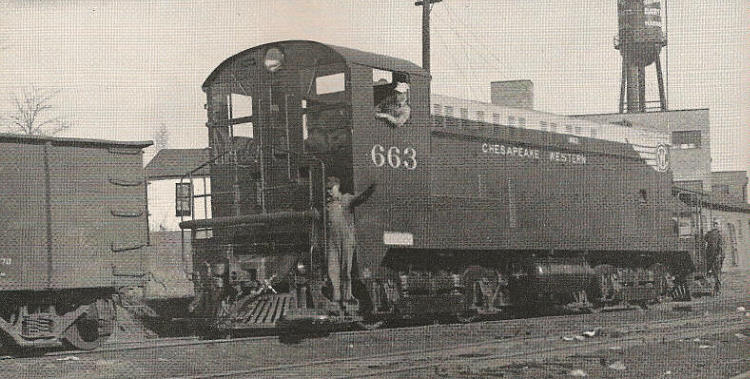|
tonnage handled by the steam locomotives was restricted to 650 tons over this section of the railroad. In the late spring of 1946, the author was re- tained by the Chesapeake Western Railway to make a thorough operating survey of existing steam service and to prepare a report estimating the savings expected to accrue through complete dieselization of the railroad. Although located in the Pocahontas Region, and in close proximity to the coal producing sections of Virginia and West Virginia, the Chesapeake Western found its loco- motive fuel steadily rising in cost until it exceded $5.50 per ton. This, plus the obsolescence of its motive power and the sharply rising cost of main- tenance made positive corrective action impera- tive. Compilation of the survey disclosed that the steam locomotives (based on 1945's figures) cost the railroad $6.15 per hour and $0.96 per mile to operate and maintain (excluding wages of en- gine crews) and these figures increased appre- ciably in 1946. In comparison, it was conserva- tively estimated that three 660-hp diesel-electrics would handle the same traffic at a cost of about $1.65 per hour and $0.25 per mile (exclusive of wages of engine crews). Furthermore, tonnage ratings and terminal-to-terminal time were esti- mated as being roughly the same for both steam and diesel locomotives; the diesel's somewhat Number 663 switching cars at Harrisonburg, Virginia. |
lower speed on ascending grades being compen- sated for by the loss of time inherent with steam locomotive operation due to taking water, coal, cleaning fires, etc. Actual service has already proven this assumption to be correct. Fuel con- sumption is running overall slightly more than one gallon per mile at a cost of about 7 1/2 ¢ per gallon. Maintenance has been practically nil other than the regular servicing and inspections, and two maintainers handle the work on all three locomotives. The 660-hp, 100-ton locomotive was the only size which could be applied to this rail- road due to weight limitations imposed by a long, through-truss span crossing the Shenan- doah River at Elkton. All three locomotives are equipped for multiple-unit operation and are also equipped with road-type pilots front and rear, so that they may be rotated between road and yard assignments. Inasmuch as locomotive maintenance facilities were located at Elkton it was necessary, under steam operation, to dead-head the two Harrison- burg switch engines and crews daily from Elkton to Harrisonburg and return, although they were frequently called upon to handle excess tonnage westbound over the ruling grade. This meant 40 miles and roughly three hours per day dead- heading per crew. By proper assignment of the diesel locomotives and operating them in multi- |
